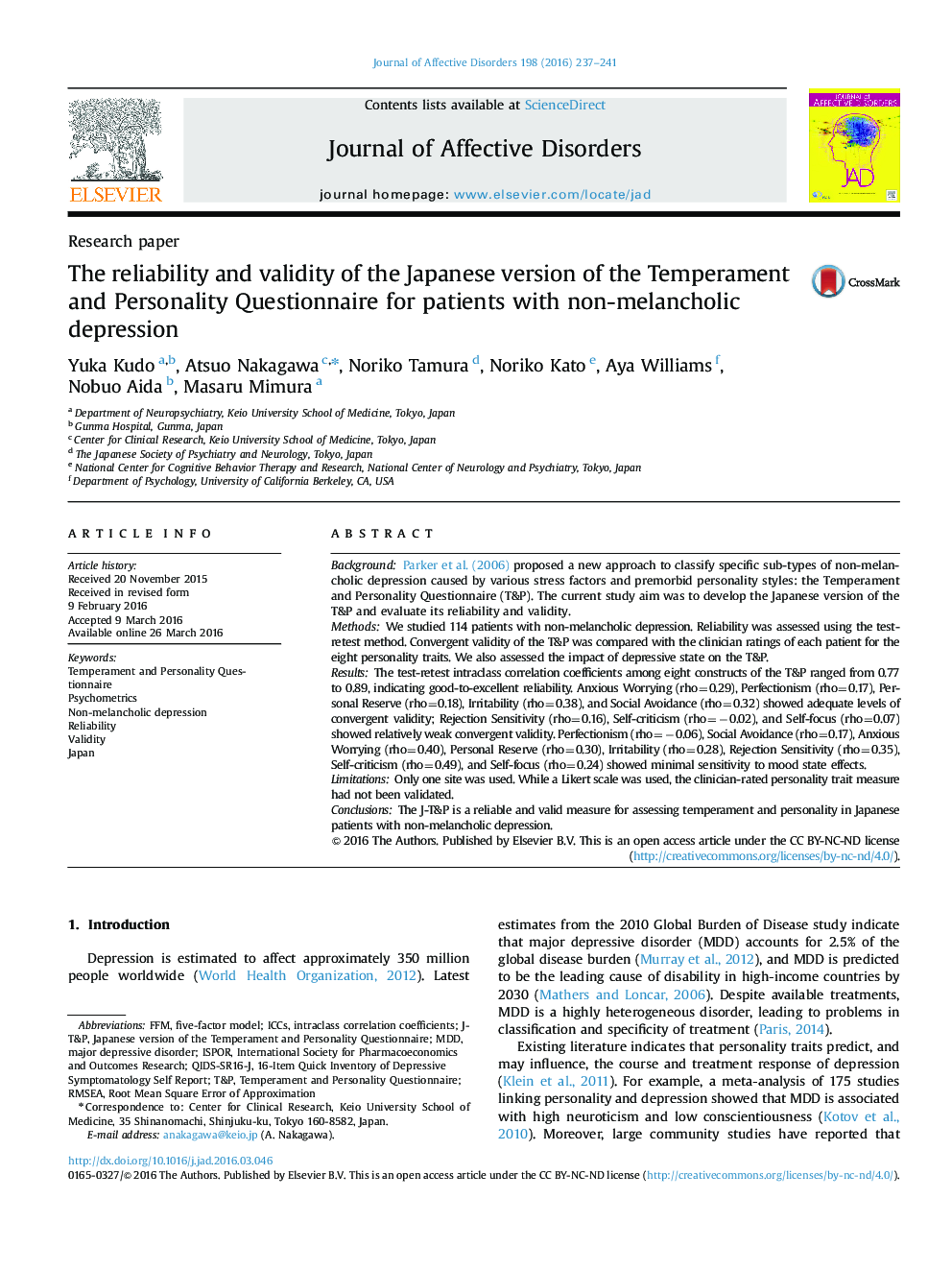| کد مقاله | کد نشریه | سال انتشار | مقاله انگلیسی | نسخه تمام متن |
|---|---|---|---|---|
| 6230231 | 1608127 | 2016 | 5 صفحه PDF | دانلود رایگان |
- The Japanese Temperament and Personality (J-T & P) questionnaire was developed.
- Test-retest reliability and convergent validity of the J-T & P were confirmed.
- The J-T & P had minimal sensitivity to mood state effects.
BackgroundParker et al. (2006) proposed a new approach to classify specific sub-types of non-melancholic depression caused by various stress factors and premorbid personality styles: the Temperament and Personality Questionnaire (T&P). The current study aim was to develop the Japanese version of the T&P and evaluate its reliability and validity.MethodsWe studied 114 patients with non-melancholic depression. Reliability was assessed using the test-retest method. Convergent validity of the T&P was compared with the clinician ratings of each patient for the eight personality traits. We also assessed the impact of depressive state on the T&P.ResultsThe test-retest intraclass correlation coefficients among eight constructs of the T&P ranged from 0.77 to 0.89, indicating good-to-excellent reliability. Anxious Worrying (rho=0.29), Perfectionism (rho=0.17), Personal Reserve (rho=0.18), Irritability (rho=0.38), and Social Avoidance (rho=0.32) showed adequate levels of convergent validity; Rejection Sensitivity (rho=0.16), Self-criticism (rho=â0.02), and Self-focus (rho=0.07) showed relatively weak convergent validity. Perfectionism (rho=â0.06), Social Avoidance (rho=0.17), Anxious Worrying (rho=0.40), Personal Reserve (rho=0.30), Irritability (rho=0.28), Rejection Sensitivity (rho=0.35), Self-criticism (rho=0.49), and Self-focus (rho=0.24) showed minimal sensitivity to mood state effects.LimitationsOnly one site was used. While a Likert scale was used, the clinician-rated personality trait measure had not been validated.ConclusionsThe J-T&P is a reliable and valid measure for assessing temperament and personality in Japanese patients with non-melancholic depression.
Journal: Journal of Affective Disorders - Volume 198, 1 July 2016, Pages 237-241
